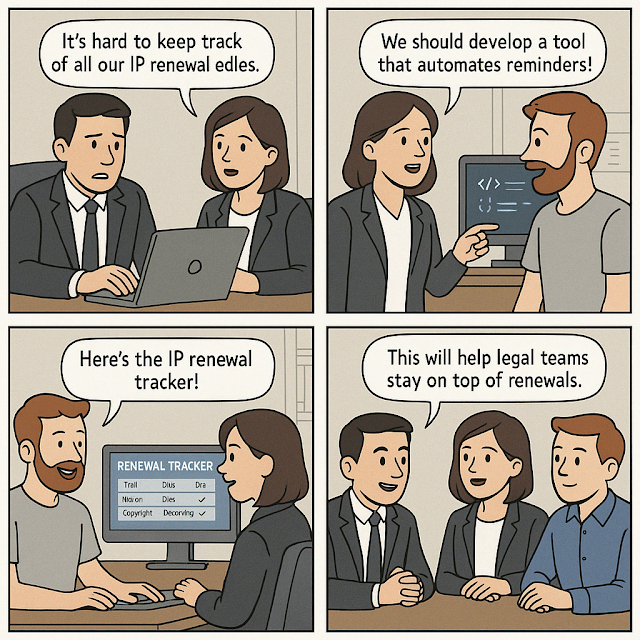How to Build an Intellectual Property Renewal Tracker for Legal Teams
Managing intellectual property (IP) is a critical task for legal teams, especially in firms handling patents, trademarks, and copyrights.
One missed renewal date can mean lost rights, legal risks, or revenue leakage.
This is why building an automated Intellectual Property Renewal Tracker is more than a luxury—it's a necessity.
🔗 Table of Contents
- Why Legal Teams Need an IP Renewal Tracker
- Core Features to Include
- Recommended Tools & Tech Stack
- Step-by-Step Implementation
- Helpful External Resources
🎯 Why Legal Teams Need an IP Renewal Tracker
IP rights such as patents, trademarks, and domain names come with strict renewal timelines.
Missing a deadline can lead to legal exposure, brand vulnerability, or even invalidation of rights.
Traditional spreadsheets are too fragile and hard to scale across jurisdictions and teams.
An automated renewal tracker gives legal departments peace of mind and audit-readiness.
🛠️ Core Features to Include
1. Multi-jurisdiction Date Tracking: Record deadlines based on region-specific rules and grace periods.
2. Email/SMS Notifications: Automated alerts 30, 60, and 90 days before deadlines.
3. Role-Based Permissions: Control who can edit, view, or receive renewal notices.
4. Cloud Sync: Ensure real-time access and backup with platforms like Google Drive or AWS S3.
5. Compliance Logs: Maintain renewal history for each asset with timestamps and user logs.
💻 Recommended Tools & Tech Stack
You don’t need to reinvent the wheel—just stitch the right tools together:
Frontend: React (for responsiveness), Tailwind CSS (for UI), Bootstrap (for admin dashboard)
Backend: Node.js or Python (Flask/Django), integrated with Google Calendar API
Database: PostgreSQL or Firebase (for structured IP data and deadline tracking)
Integration: Slack/Email notifications via Zapier, SendGrid, or Twilio
🚀 Step-by-Step Implementation
Step 1: Create a centralized IP asset database—store fields like jurisdiction, renewal cycle, and owner contact.
Step 2: Map key dates to Google Calendar or an in-house notification system.
Step 3: Develop frontend dashboard for overview, filtering, and editing of IP assets.
Step 4: Set automated email or SMS reminders using CRON jobs or Zapier workflows.
Step 5: Test thoroughly with historical data to ensure accurate alerts and access controls.
🔍 Helpful External Resources
Looking for inspiration or ready-to-deploy frameworks?
These resources can give your IP tracker a head start:
Visit InfoParad for Legal Tracker ToolsExplore InfoGatherin’s IP Management Blogs
Masterinfoer’s Legal Automation Insights
✅ Final Thoughts
By investing time upfront to build an IP renewal tracker, legal teams can dramatically reduce risk, save on penalties, and keep stakeholders aligned.
Plus, it’s a great step toward operational maturity in the legal ops journey.
If you're managing dozens—or even hundreds—of intellectual property assets, don't wait for a missed deadline to upgrade your system.
Start building today, and future-proof your legal practice.
Keywords: intellectual property tracker, legal tech automation, IP deadline reminders, patent renewal system, legal SaaS

